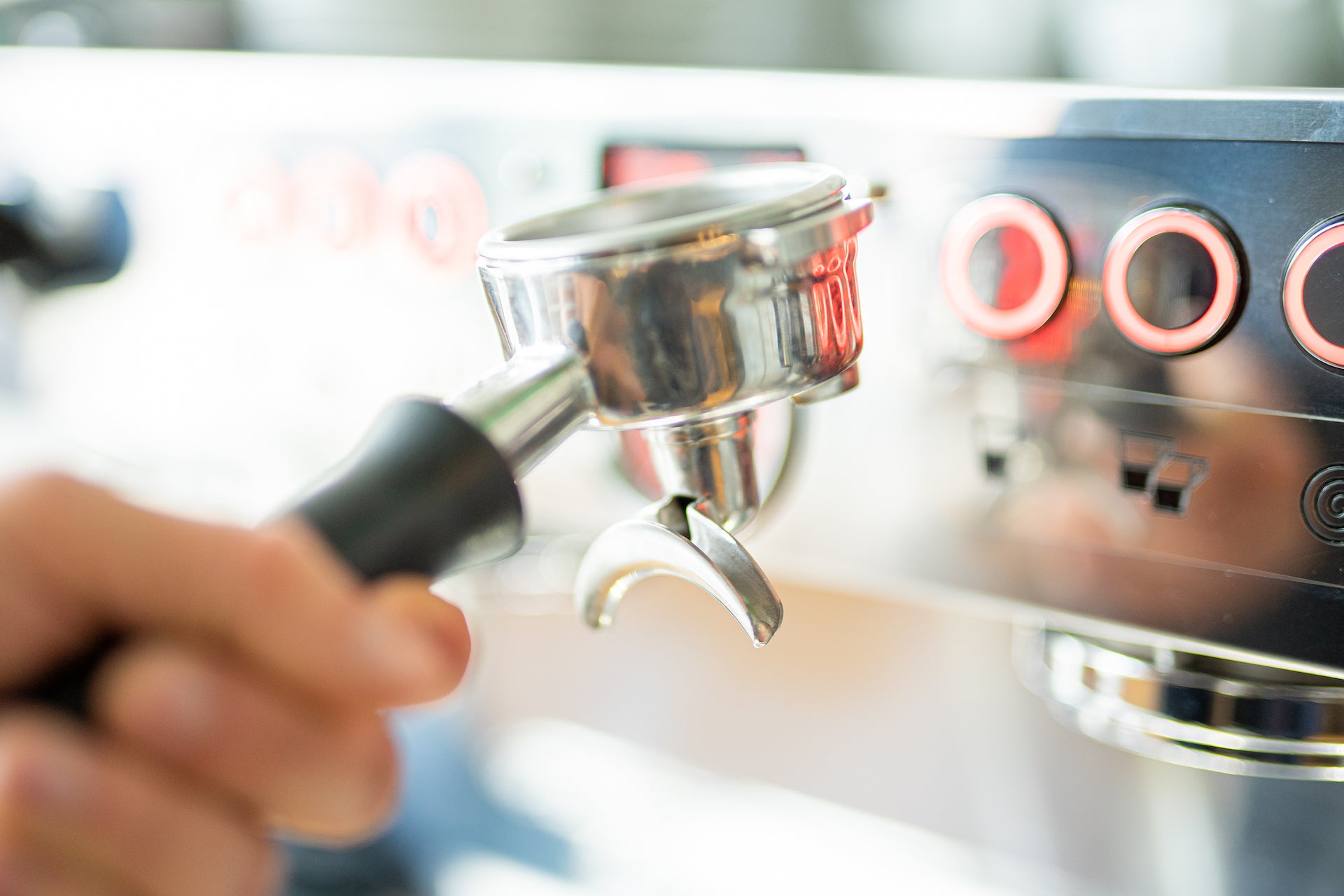Most espresso machines will come with a single basket bundled in, which will often be left to gather dust. How useful are they really? Let’s go back to school and do some maths…
A brew ratio of 1:2 is generally considered a good starting point for most espressos, though you might go bigger or smaller, especially with very dark or very light roasts. This ratio expresses the yield (liquid coffee in the cup) from a given dose (ground coffee in the basket). Baskets will generally specify a dose size, and a common double basket size is 17g. That makes a good starting recipe for our espresso: a17g dose, with a 34g yield.
What happens if we swap out our 17g double basket for a single basket? Simple maths would say that a single espresso could be pulled with 8.5g of ground coffee, and a yield of 17g. Easy! You might even save a few pennies along the way, right?
Sadly, it’s not that simple. Single baskets have a bit of a funny design, with sloped sides that are designed to enable single and double shots to be pulled in the same workflow, but which actually just make it impossible to tamp. This means you can’t really get away with less than a 13-15g dose if you want a properly tamped puck that doesn’t “channel”. That means you’re only saving 3-4g. In a busy café environment, this small saving is quickly lost through the inefficiency of pulling single shots.
If this all this worrying about a few grams of coffee here and there sounds a bit pernickety, consider that with a 17g dose, a change of 2g represents a nearly 12% change in dose, which could be the difference between a decent coffee and a bloody good coffee. Each morning our baristas “dial in” the coffees, adjusting recipes and grind sizes to account for slight differences in the water quality, the weather, and the age of the beans to keep your coffee tasting consistently amazing. We also filter our water with reverse osmosis to squeeze every last drop of goodness out of each bean.
Let’s say your café serves 200 coffees a day. If your barista is using a single basket with an 11g dose, they’ll need 2.2kg of coffee per day to pull 200 espressos. If each espresso takes 30 seconds to pull, they’ll spend 100 minutes across the day extracting espresso.
But, if they were to use a double basket with a 17g dose and split each double shot into two cups, they’d use just 1.7kg of coffee each day and would only need to pull 100 handles. Even if the brew time is as long as 40 seconds, they’d still only spend 67 minutes extracting espresso.
All this to say that using a double basket you can save 33% of your labour costs, and drop the waiting time by almost 30%, all while saving half a kilo of coffee every day (assuming you serve 200 coffees a day).
On top of that, pulling equally delicious espressos from a single and a double basket side by side is a tricky business that takes a dab hand (our training sessions might help there). Swapping from a single to a double basket changes a whole range of variables, often necessitating a change in grind size. If your café isn’t blessed with two grinders to accommodate this, you’ll be fiddling with dose and yield to get a similar tasting espresso from both basket sizes. Keep it simple, stick with the double.




